Tongdwaeji Duruchigi (통돼지두루치기)
13.4Km 2021-03-18
252-6, Jong-ro, Jongno-gu, Seoul
+82-2-2266-9290
This is a Korean cuisine located in Dongdaemun Gate, Seoul. It is also famous for uruchigi (Korean bouillabaisse) made by stir-frying pork and vegetables in gochujang (red pepper paste) sauce. The best menu at this restaurant is pork and kimchi stew.
Seoul Forest (서울숲)
13.4Km 2024-10-29
273 Ttukseom-ro, Seongdong-gu, Seoul
+82-2-460-2905
Seoul Forest is a city park opened on June 18, 2005 in what was originally a water treatment facility. Consisting of four themed parks spread over approximately 595,000 ㎡ of land, Seoul Forest is an eco-friendly zone appreciated not only by the people of the city but also those visiting Seoul.
Waryong Park (와룡공원)
13.4Km 2020-07-08
192, Waryonggongwon-gil, Jongno-gu, Seoul
+82-2-2148-2845
Situated in Myeongryun-dong in Seoul and established in 1984, Waryong Park is located near Malbawi, one of the best overlooks from which to see the city of Seoul. The park is close to natural attractions such as Samcheong Park, Changgyeong Park, and Bugaksan Mountain.
Although it was difficult to grow trees in the park because of the shallowness of the soil, many citizens participated in the nationwide campaign to plant over 10 million trees across the country, transforming places like Waryong into lush areas filled with flowering plants.
In the park, spring blooms forth in a colorful assortment of cherry trees, plum blossoms, azaleas, and forsythias, making it a popular destination for family visitors. There are also a variety of excellent amenities: badminton courts, aerobic fields, fitness facilities, and pavilions, wonderful for exercise, leisurely walks, or simply taking a break.
A famous hiking trail, running between the Seoul Fortress Wall and Samcheong Park, passes right through the park. Flanked by cherry blossoms, the trail attracts nature lovers throughout the year and especially in spring, when the trees are in full bloom. The trail also passes by the Fortress Wall in Bugaksan Mountain.
Tonymoly - Dongdaemun Branch [Tax Refund Shop] (토니모리 동대문)
13.4Km 2024-04-18
257, Jangchungdan-ro, Jung-gu, Seoul
-
Hong Chun Cheon Dongdaemun(홍춘천 동대문)
13.4Km 2020-10-30
5, Jangchungdan-ro, 13-gil, Jung-gu, Seoul
+82-2-2273-7888
A chicken specialty restaurant located in Dongdaemun Gate, Seoul. The most famous menu is spicy stir-fried chicken with cheese. A restaurant where you can try Korean BBQ chicken.
Dongdaemun Dak Hanmari Alley (서울 동대문 닭한마리 골목)
13.4Km 2024-03-04
37-7, Jongno 5(o)-ga, Jongno-gu, Seoul
+82-2-2236-9135
Located near the Dongdaemun Market, Dongdaemun Dak Hanmari Alley gets its name from the restaurants serving dak hanmari (whole chicken soup) that line the alley. Dak hanmari (whole chicken soup), literally “one whole chicken” in Korean, is a dish where a whole chicken is boiled in a soup and served with the alley’s special sauce. After the diners eat the meat, the broth is used to make kalguksu (noodle soup). Because the area is home to large-scale apparel and fashion material markets of the Dongdaemun Market, the district is always lively and bustling.
Seoul Olympic Parktel (서울올림픽파크텔)
13.4Km 2020-04-25
448, Olympic-ro, Songpa-gu, Seoul
+82-2-410-2514
Nestled in Seoul Olympic Park, Seoul Olympic Parktel aims to offer the best service to all visitors. The many guestrooms and amenities like the banquet hall make the hotel suitable for large gatherings, such as interntional conferences and seminars. The business center and fitness club help make Seoul Olympic Parktel stand out as providing the best service.
Jinokhwa Halmae Wonjo Dakhanmari (진옥화할매원조닭한마리)
13.4Km 2024-03-04
18 Jong-ro 40ga-gil, Jongno-gu, Seoul
+82-2-2275-9666
Jinokhwa Halmae Wonjo Dakhanmari is a renowned restaurant located in the alley of whole chicken soup near Dongdaemun Market, operating since 1978. Its specialty is dakhanmari (whole chicken soup), a whole chicken boiled in savory and rich broth. Adding finely chopped green onions enhances its refreshing flavor. The chewy rice cakes dipped in the seasoned sauce are also delightful. Additionally, it's customary to enjoy the remaining broth by mixing it with seasoning sauce and noodles, creating a delicious kalguksu (noodle soup).
Saemaeul Sikdang Dongdaemun (새마을식당 동대문)
13.4Km 2024-03-11
1FL, 30, Eulji-ro 43-gil, Jung-gu, Seoul
+82-2-2274-0410
Located near Dongdaemun and Dongdaemun Design Plaza (DDP), Saemaeul Sikdang specializes in traditional Korean grilled pork, including bulgogi, moksal (grilled pork shoulder), and grilled intestine. Especially for lunch, patrons have the option to delectable baekban (hand-made set menu), which is a traditional home-made Korean meal with steamed rice and grilled pork for side dish.
Myeong-dong Alssam Jjukkumi VS Budaejjigae(명동 알쌈쭈꾸미 VS 부대찌개)
13.4Km 2021-04-09
13, Jangchungdan-ro, 13-gil, Jung-gu, Seoul
+82-2-2275-9023
It is a place where you can enjoy grilled jjukumi (webfoot octopus) with egg wraps. The best menu at this restaurant is sausage stew. This Korean dishes restaurant is located in Jung-gu, Seoul.
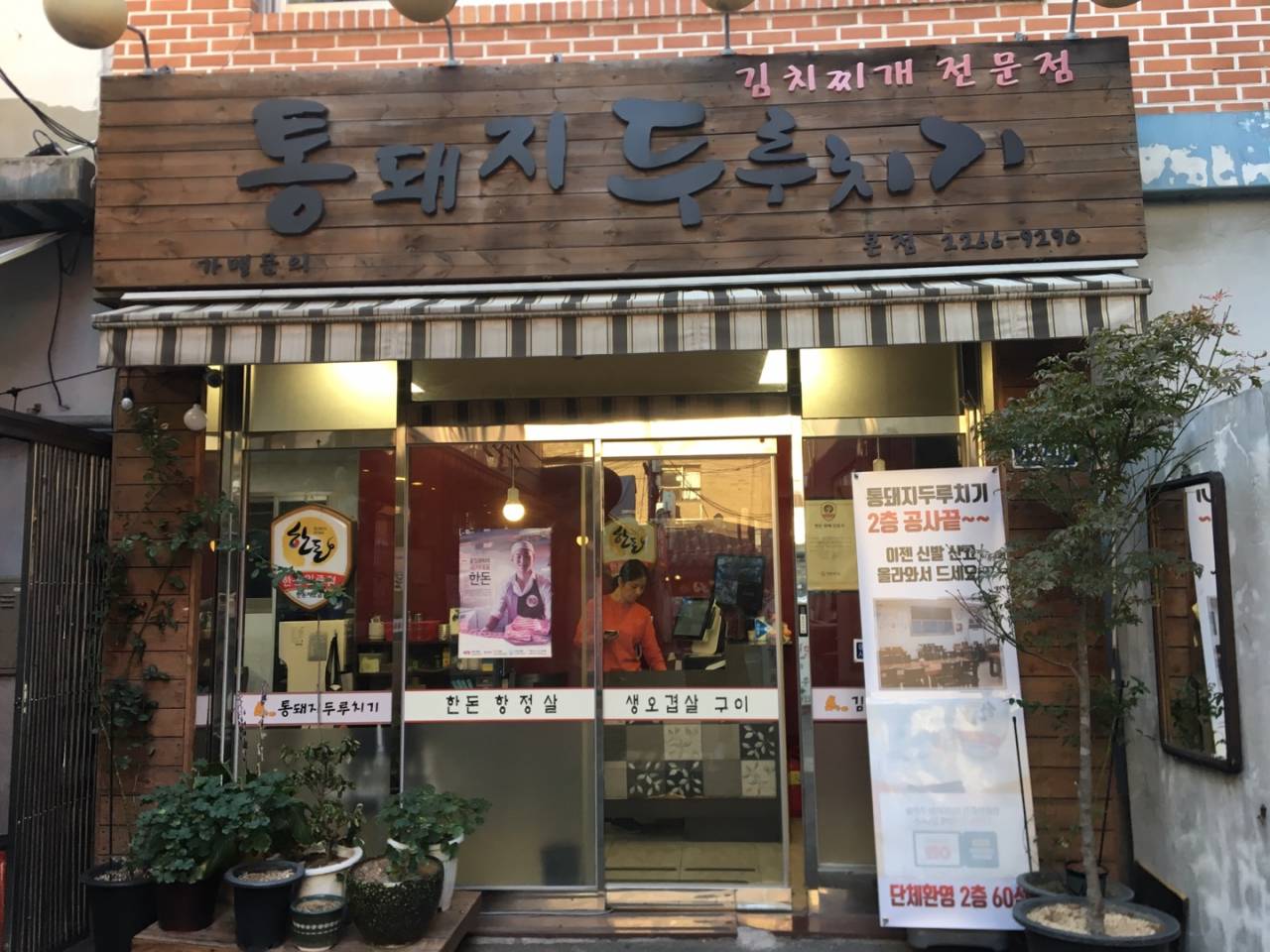

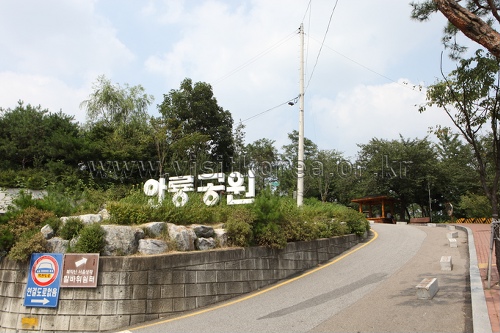
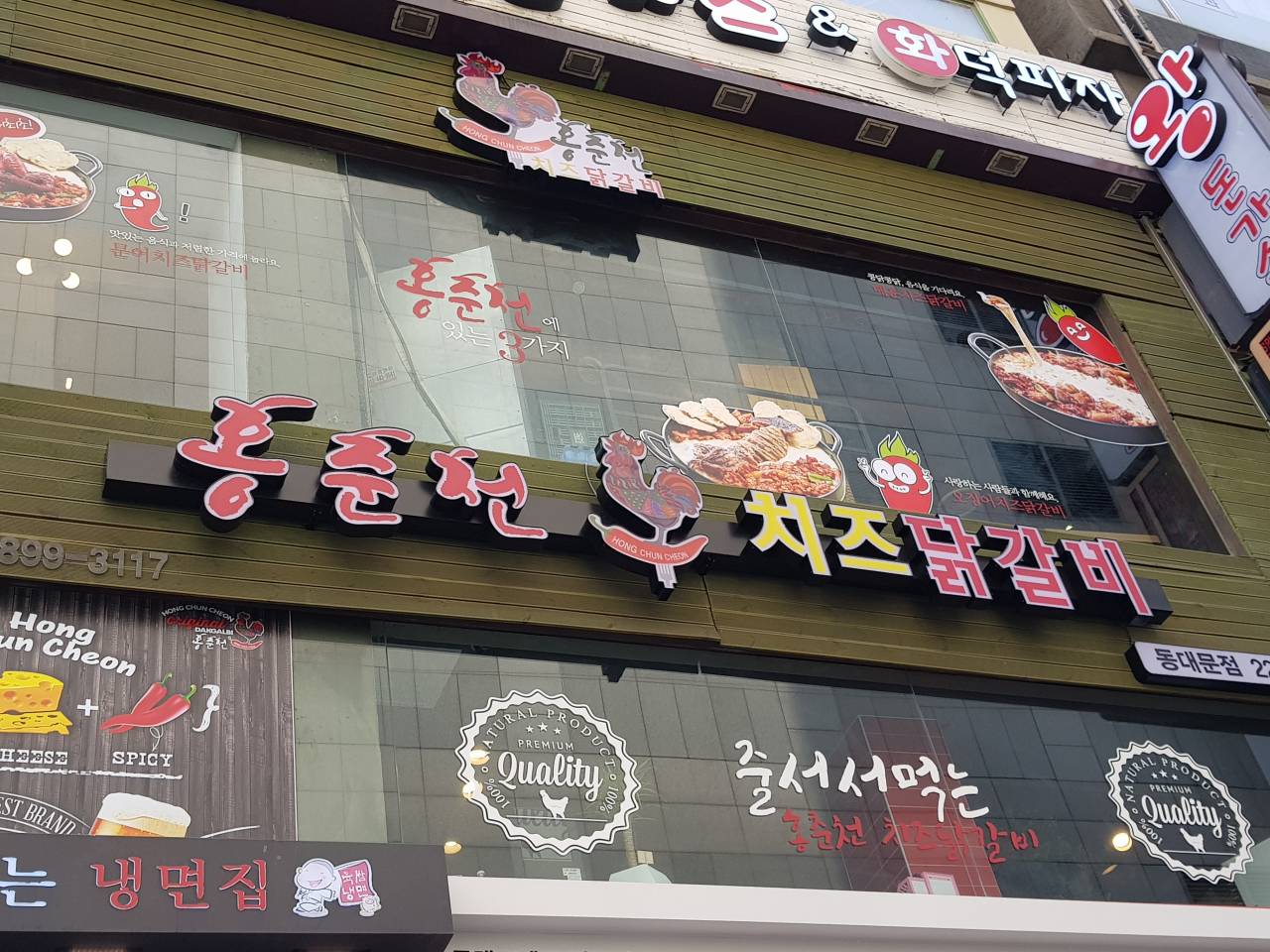
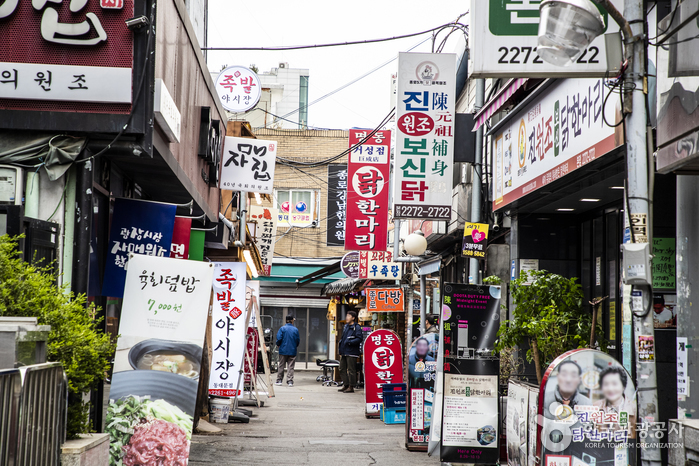
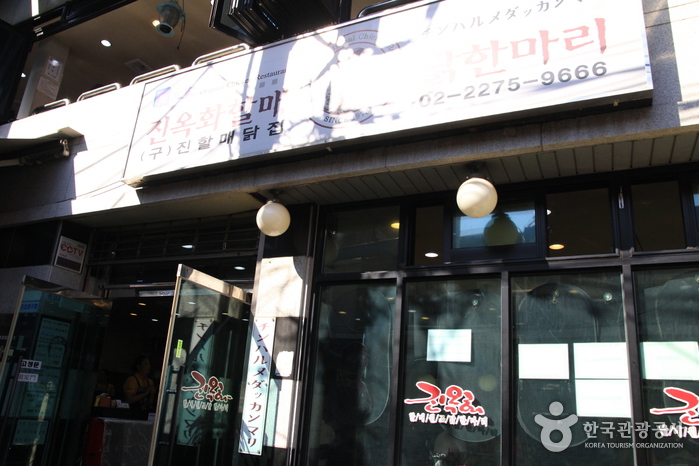
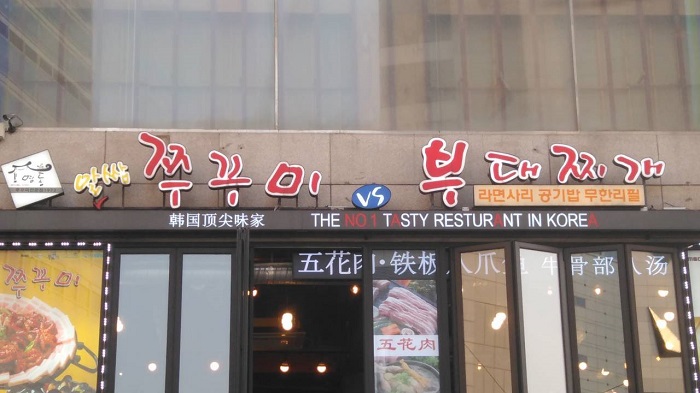
 English
English
 한국어
한국어 日本語
日本語 中文(简体)
中文(简体) Deutsch
Deutsch Français
Français Español
Español Русский
Русский